#Asian Civilizations Museum
Explore tagged Tumblr posts
Text
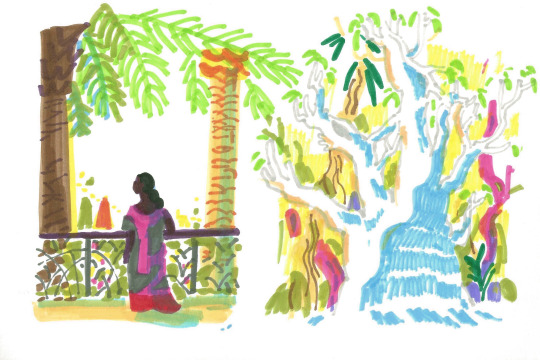

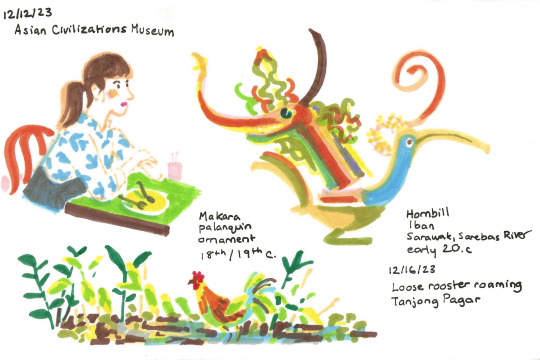
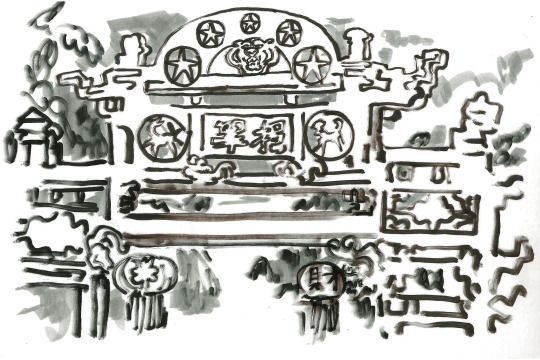

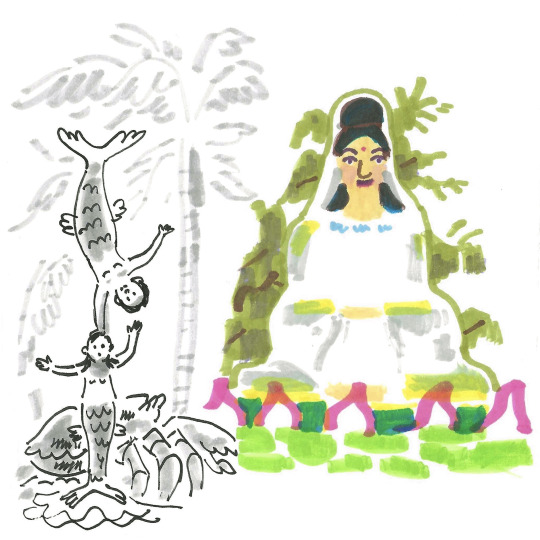

Travel sketches from my trip to Asia this winter! I got to travel Taiwan, Thailand and Singapore, although sadly I only really had time to draw in Singapore. Drawings here depict Chihkan Tower in Tainan, Haw Par Villa, homes and playgrounds in Tanjong Pagar, Gardens by the Bay and the Asian Civilizations Museum in Singapore.
#Singapore#Taiwan#Tainan#Haw Par Villa#Gardens by the Bay#Tanjong Pagar#Asian Civilizations Museum#marker#sketchbook#sketch#traditional art#chikan tower#chihkan tower
11 notes
·
View notes
Text

Gold cup with musicians and dancers, China, Tang Dynasty, circa 830 AD
from The Asian Civilizations Museum, Singapore
210 notes
·
View notes
Text


Asian Civilizations Museum, Singapore
34 notes
·
View notes
Text

FBI Returns Looted Artifacts Found in Massachusetts to Japan
The FBI has returned a trove of looted Japanese art to its country of origin after a family found a stash of artifacts in their late father’s Massachusetts attic.
The family of a deceased World War II veteran contacted the FBI after discovering the items, which they determined to be “very valuable Asian art,” while sorting through his personal effects. The man had never served in the Pacific theater, according to the FBI.
“There were some scrolls, there were some pottery pieces, there was an ancient map. They looked old and valuable,” Special Agent Geoffrey J. Kelly, art crime coordinator for FBI Boston and a member of the FBI Art Crime Team, said in a statement.
And because of this, they did a little research and they determined that at least the scrolls had been entered about 20 years ago in the FBI’s National Stolen Art File.”


Among the items were six 18th-19th-century painted scrolls, an ornate 19th-century hand-drawn map of Japan’s fifth largest island, Okinawa, and pottery and ceramics that included plates, bowls and teapots.
When unfurled and studied at the Smithsonian Institution’s National Museum of Asian Art in Washington, D.C., the scrolls showed colorful portraits of Okinawan royalty.
A typewritten letter found alongside the artifacts in Massachusetts helped confirm they were looted during the last days of World War II, the FBI added.
“When taken together, they really represent a substantial piece of Okinawan history,” Kelly said of the artifacts.


“A nation’s cultural identity is really summed up in the artifacts and the history,” he said.
“This is what makes a culture. And without it, you’re taking away their history. And the surest way to eliminate a culture is to eliminate their past. And so, it’s really important for us as stewards of artifacts and cultural patrimony to make every effort that we can to see that these go back to the civilizations and the cultures in the countries where they belong,” Kelly added.
The artifacts were returned to Okinawa last week, the FBI said, but noted that several Okinawan objects are still missing and are listed in the National Stolen Art File.
By Amy Woodyatt.

#FBI Returns Looted Artifacts Found in Massachusetts to Japan#National Stolen Art File#art#artist#art work#art world#art news#stolen art#looted art#japanese history#japanese art#Okinawa
41 notes
·
View notes
Text
Saving Houston’s LGBTQ history through thousands of hours of radio archives

1984 Houston Pride Parade 📷 JD Doyle
For years, hundreds of fragile cassette tapes sat quietly aging in a storage locker in Houston, Texas. Each plastic case contained hours of radio shows, made for and by LGBTQ people. The first shows aired in the mid-1970s. They continued, off and on, for more than 30 years -- a period that included the AIDS crisis, the women’s liberation movement and the rise of LGBT civil rights. A pair of archivists, Emily Vinson and Bethany Scott, have been working on preserving the programs, thousands of hours of them, online. … The shows aired on KPFT (90.1), Houston’s Pacifica station. One of them, Wilde ‘n’ Stein (named for Oscar Wilde and Gertrude Stein) started in 1975 and ran through the early 1990s. A late night show, After Hours, ran from 1987 until the early 2000s. … Over the years, the producers and hosts of these radio shows brought their listeners live street coverage of Pride parades, music that celebrated LGBTQ experiences and interviews with city council members, activists, local arts luminaries, and public health officials. Because it was on the radio, often late at night, closeted people could listen quietly and discreetly, without the fear of discovery that printed material might bring. Carl Han, a young Vietnamese-American, listened to the station’s LGBT programming at the lowest possible volume, as he told the radio show After Hours in 1992. “That’s how I discovered the Montrose [LGBT] community,” he said. “At the age of 15, I hit upon KPFT one night and turned it down real low so no one can hear.” He would go on to be a leading local activist, who at the time of the broadcast was the secretary of Asians and Friends, a community group serving Houston’s LGBTQ Asian Americans. Such content came as a revelation to 20-year-old Andrea Hoang. As an undergraduate at the University of Houston, one of her campus jobs was to help digitize and transcribe the shows. Hoang, who identifies as queer, was thrilled to discover the voices of Asian-American activists, including Han and After Hours host Vivian Lee, in broadcasts from before she was born. “They had so many people of color coming onto this show and spearheading these local movements,” she marvels, adding that she also loved learning about the vibrant LGBT music played on the programs so much, she made this Spotify playlist honoring it. The digitization of this audio history, says Vinson, would not be possible without three Houstonians who safeguarded the cassettes for so many years. Judy Reeves co-founded the Gulf Coast Archive and Museum of Gay, Lesbian, Bisexual, and Transgender History. JD Doyle maintains an extensive website documenting local LGBT history. Jimmy Carper was a longtime host and producer of After Hours. …
Neda Ulaby | NPR | June 4, 2024
More On NPR >
Listen to Andrea Hoang's archive-inspired Spotify Playlist
#wilde n stein#kpft#after hours#radio station#queer#queer history#asians and friends#lgbqti#lgbt#trans#pride month#pride march#protest#houston#texas#university of houston#aids crisis#1984#1980s#80s#70s#1992#90s#00s#1970s#1977
26 notes
·
View notes
Text

Yang Guifei by Uemura Tsune 1922. Shohaku Art Museum, Nara, Japan.
Yang Guifei was one of the Four Beauties of China. She was also one of the victims of the era of the An Lushan rebellion, an eight year civil war that radically transformed China from a tolerant nation to an anti-foreigner one. An Lushan was a Turkic rebel that had served as a general in Tang China. He bore a Sogdian name, likely due to childhood adoption by a Sogdian step-father that had wed his Turkic mother from the elite Ashide clan. He was also adopted by Chinese consort Yang Guifei. Though, because Yang Guifei's cousin feuded with An Lushan prior to his rebellion the Tang emperor's soldiers sought her execution. They accused her cousin of causing An Lushan to rebel and also accused him of treason via conspiracy with the Tibetans. The Tang emperor sat idle while the soldiers killed his favorite consort, fearful they would depose him if he defended her too fiercely. Her family was also killed, regardless of their innocence:
"When tourists go to Huaqing Springs in Xi’an today, they can bathe in hot water as she allegedly did when the aging Emperor first saw her among the court women. She is said to have formed a friendship with An Lushan, who became a general of Chinese troops despite his Central Asian origins; she may have even adopted An Lushan as a son. Both Yang Guifei and An Lushan are described as dancing the “whirl,” a Central Asian dance which can be seen in pictures of the Tang court preserved in Dunhuang’s caves on the Silk Road. The Emperor is believed to have been so in love with Yang Guifei, he neglected his duties. The location of Yang’s death is as famous as that of her bath; guidebooks will tell you exactly the location of Ma Lei Station, the place where she was throttled, hanged, or forced to commit suicide by the Emperor’s disgruntled associates." (taken from Columbia.edu)
"In this tense situation, soldiers of the imperial guard declared that Yang Guozhong was planning treason in collaboration with the Tibetan emissaries. They killed Yang Guozhong, his son Yang Xuan (楊暄), Consort Yang's sisters, the ladies of Han and Qin, and Wei Fangjin. (Wei Jiansu was severely injured and nearly killed, but was spared at the last moment.) Yang Guozhong's wife Pei Rou (裴柔) and his son Yang Xi (楊晞), along with Consort Yang's sister, the Lady of Guo, and her son Pei Hui (裴徽) tried to flee, but were killed. The soldiers then surrounded Emperor Xuanzong's pavilion and refused to leave, even after the Emperor came out to comfort them and ordered them to disperse. Emperor Xuanzong then sent Gao Lishi to ask General Chen Xuanli for his advice. Chen's reply was to urge the Emperor to put Consort Yang to death." (taken from Wikipedia)
#ancient china#tang dynasty#chinese history#japanese art#ancient history#history#art#paintings#museums
32 notes
·
View notes
Text








Reiji Hiramatsu (平松 礼二 b. 1941 in Tokyo) is a Japanese Nihonga painter.
His father was a civil servant who moved the family to Nagoya in 1946, where Reiji Hiramatsu would grow up. Early on he developed interest in the traditional painting techniques of Nihonga, however on behest of his parents he first studied law and economics at the Aichi University. He began his artistic career after graduating and developed into one of the foremost representatives of Nihonga. In 1967 he married his wife Hiroko, who would encourage him in his pursuit of painting.
In 1994 he visited the Musée de l'Orangerie and Giverny in France. He was inspired by Claude Monet and produced a number of paintings and byōbu screens that re-interpret Monet's Water Lilies, which in turn originally were inspired by Japonisme. Reiji's Water Lilies were exhibited in 2013 at the Museum of Impressionism in Giverny, as well as the Museum of Asian Art in Berlin.
48 notes
·
View notes
Text
Designed by architect Albert Laprade, the Palais de la Porte Dorée, whose construction began in 1928, stands at the entrance to the vast space designed to house the 1931 Colonial Exhibition in Paris. [...] [Its] style was a perfect example of a colonial modernity [...].
The display of riches extracted from the colonies, and the depiction of people bent over working, busy doing a thousand actions destined to enrich France, make up the Palais de la Porte Dorée’s 1,200-square-meter façade. It was realized at a time when many cracks were showing in the colonial empire, and when anticolonial groups in France and Europe were honing their arguments. Far from the peaceful image of worlds laboring to enrich France portrayed on this façade, [...] [t]he 1931 International Colonial Exhibition fabricated an illusion: that of a successful pacification and a working empire. [...] The government wanted to impress and dazzle the public [...].
A veritable tour de force, in a day, the public could visit Angkor Vat, Timbuktu, the palaces of Niger, or of the Queen of Madagascar. These monuments of vanquished civilizations -- now “French possessions” -- proved that access to fabulous riches had been secured. The 1931 Exhibition glorified the French colonial “civilizing mission,” but behind this euphemism were assimilation policies based on dispossession, the Code de l’indigénat (Indigenous Code), which legalized various forms of discrimination in the colonies, forced labor, and exploitation. [...] The colossal aspect of the Exhibition only fleetingly masked these fissures. [...] By its very inordinateness, the Colonial Exhibition [...] inadvertently revealed the illusion that underlay the colonial project. [...]
---
In Europe and France in the 1910s to 1920s, Black, Asian, and Arab people organized, wrote, and mobilized. Examples include the Pan-African Congress in Paris in 1919 [...]. The constituent congress of the League against Imperialism and Colonial Oppression was held in Brussels in 1927. [...] [I]t was attended by representatives of the African National Congress, [...] Albert Einstein, Henri Barbusse [...]. Let us not forget either [...] the uprisings in Vietnam in 1908; [...] the 1925 revolt in Syria; or again in Vietnam in 1930. [...] Revolts and demonstrations demanding rights broke out throughout the entire French colonial empire, including [...] the demonstrations in Abéché (Chad) in 1917; the demonstrations of the people of Gabon and the Middle Congo from 1917 to 1918 [...].
---
As an institution, the museum partook in the invention of homogeneous, racialized categories (“Africans,” “Asians,” “Arabs,” “Europeans”) [...]. The Palais de la Porte Dorée’s multiple bas-reliefs [...] form a veritable “stone tapestry” and an imposing fresco of imperialist power. The work of sculptor Alfred Auguste Janniot (1889–1969), it constitutes a colonial encyclopedia. Entitled: “L'Apport des territoires d'outre-mer à la mère patrie et à la civilization” (“The Overseas Territories’ Contribution to the Motherland and to Civilization”), it is the only of its kind in France in terms of size.
In this bas-relief, a vast, diverse, and complex world is reduced to a flat surface on which these figures’ labor contributes to the greatness of France. [...] The colony as disciplinable “Nature” [...]. Humans and animals, plants and pirogues intermix and intertwine. Here, half a body emerges from the foliage; there a child perched on a woman’s hip hovers over a cactus. Further on, the name “Sudan” spills from a lion’s mouth. There is no social life, [...] the colony is “Nature.”
This disorder contrasts with its orderly finality: the anticipated export of products to France. But it is also a disorder that evokes the ordering of the world through colonization. [...]
---
The colony was a huge enterprise in taming fauna, flora, humans, rivers, forests, and mountains. Nothing was to escape the colonizers’ eye, or control. Everything had to be renamed, ordained, arranged, distinguished according to norms that reinforced an epistemology and imposed rigid binarities on worlds that had complex understandings of the living. Colonization was a project of control, possession, and transparency.
Thanks to this bas-relief, the French were given the impression of knowing everything about a world laying at its fingertips, that colonization offered them the entire diversity of the world, pacified, disciplined, subjected. [...] The Exhibition’s Jardin d’Acclimatation was an instrument of this organization; the public could imagine it was visiting the jungle, the savannah, tropical forests, and seas comfortably and safely. [...]
We also see the extent to which structures of racism destroy the possibility of living differently, [...] the imagination, that they stifle us, that they sever ties [...]. We want to retrace the cartographies of transnational and transcontinental resistance, to give voice [...]. We no longer want to be put under house arrest, confined.
---
All text above by: Françoise Vergès. “Decolonize the City.” e-flux Architecture (Appropriations series). May 2023. [All bold emphasis and some paragraph breaks/contractions added by me. At e-flux, Vergès explains, in an introduction, that this text “is a compilation of several extracts of the book De la violence coloniale dans l’espace public: Visite du triangle de la Porte Dorée (Of Colonial Violence in the Public Space: A visit to the Porte Dorée Triangle)“.]
#ecology#imperial#colonial#abolition#temporal#haunted#indigenous#french algeria#carceral#multispecies#carceral geography#tidalectics#caribbean#archipelagic thinking#intimacies of four continents#victorian and edwardian popular culture
27 notes
·
View notes
Text
[Image ID: A black man sitting comfortably on a greenish-white couch with his arms sprawled across the top. He is wearing a black durag with white stripes and a BLM shirt. He has an afro-textured beard. Above him is the Black American Heritage flag, which is three diagonal stripes of red, black, and red, where the center lies a yellow reaf surrounding a sword. The texted captions read throughout the video, "Juneteenth: Educational Purposes," "The Slaves Freed on Juneteenth were NOT African, they were black", "In Reality: African Slaves went extinct after generations of interacial breeding & indoctrination of Christianity", "The Slaves released & Modern Day Black Ppl today are the successful product of said brainwashing & deterioration of thr African in America!" and "Black American Heritage Flag created 1967." End ID]
[Caption: The man says, "Public service announcement in regards to Juneteenth: As we know, the holiday is less than a week away, and we also know, greedy ass corporations are going to try and capitalize and get a dollar in anyway, shape, or form. Which leads me to this announcement, or should be better clarified as advisory. If you step foot, in any store, and you see Juneteenth related products with nothing but the African flag or African flag colors, do not by that shit. This is in no way disrespectful to our melanated neighbors from the mother land. Because, if it's one thing, that the black community has been able to piece together with the context clues of history shared museums and novels. To map out what all happened during that time period, that history books would not tell us in school. It's the simple fact that the slaves that were finally being freed after the Civil War were not African. They were black. Please allow me to explain Juneteenth in that statement I just made. Slavery was officially abolished on January 1st of 1863, when Lincoln issued the Emancipation Proclamation. Unfortunately, a portion of traitor sore losers- excuse me, I mean slave owners, decided not to relay that information to their slaves for another 2 and half years. Leading to another, smaller batch of slaves to finally found out they were on June 19th of the year 1865. And, honestly, Juneteenth is just the tip of the fucked up iceberg, as to what slave owners were capable of, when they did not want to give up their slaves. Because there were still slave plantations being discovered and shut down past the year of 1865. Killona Slave Plantation in Louisiana was the last recorded discovered in America, and shut down. And that was in the 1970s. The only reason those plantations lasted so long, was because of how isolated they were, in deep forests, and the constructions of roads, and highways, was what lead to their exposure. But in that century of slaves finally being free, there were several factors that they all had in common. They spoke fluid English with no African Language, they were all Christians with no practice of African religion, nor did they know what African tribe they were a part of. Within the first 100 out of 400 years of slavery, Africans were seperated from their tribes, their bloodlines, told to forget their names, and then forced to forget their African religions and learn Christianity, and forced to mix with other races. I have a friend who just discovered he was part Latino, and he does not look Latino at all. Hell, thanks to the best of my family's ability, I know I have African, Native, French, White, and Asian blood running through my veins, and I still don't know what tribes I am connected to. But, that is why I choose to have this flag on my wall, because this flag right here, represents all people of color, who either lost, or do not know their history prior to being naked and chained up on a boat. End ID]
Video ID by discord member
30 notes
·
View notes
Text
Bangladesh’s Prime Minister Sheikh Hasina resigned on Monday as thousands of protesters defied a military curfew and stormed her official residence, sparking violence that killed at least 66 people according to local police and hospitals. Army chief Waker-Uz-Zaman confirmed in a televised address that Hasina had left the country and that an interim government would be formed. Hasina's resignation comes as deadly protests over the reintroduction of a quota scheme for government jobs began in July this year.
Sheikh Hasina's 15-year rule as Bangladesh's prime minister ended Monday as she fled more than a month of deadly protests and the military announced it would form an interim government.
Hasina had sought to quell nationwide protests against her government since early July but she fled the country after brutal unrest on Sunday in which nearly 100 people were killed.
"We want a corruption-free Bangladesh, where everyone would have the right to express their opinion," said Monirul Islam, a 27-year-old man among hundreds of thousands celebrating in the streets in the capital Dhaka.
Bangladesh's army chief General Waker-Uz-Zaman said in a broadcast to the nation on state television that Hasina had resigned and the military would form a caretaker government.
Why is the army speaking for Bangladesh following PM Sheikh Hasina's resignation?
"The country has suffered a lot, the economy has been hit, many people have been killed – it is time to stop the violence," said Waker, shortly after jubilant crowds stormed and looted Hasina's official residence.
At least 66 people were killed Monday, police said, saying gangs had launched revenge attacks on Hasina's allies. Many were shot.
Millions of Bangladeshis took to the streets across the South Asian country.
Jubilant crowds waved flags, some dancing on top of a tank, before thousands broke through the gates of Hasina's residence. Others later stormed parliament.
Bangladesh's Channel 24 broadcast images of crowds running into the prime minister's compound, grinning and waving to the camera, looting furniture and books, or relaxing on beds.
'Mob rule'
Mobs also raided and ransacked the homes of Hasina's Awami League party allies as well as police stations, witnesses told AFP.
"The homes and businesses of pro-Awami League people have been attacked," a senior police officer said, speaking on the condition of anonymity, and calling the violence "mob rule".
Others torched television stations that had backed Hasina's rule, smashed statues of her father Sheikh Mujibur Rahman, the country's independence hero, and set fire to a museum dedicated to him.
"The time has come to make them accountable for torture," said protester Kaza Ahmed. "Sheikh Hasina is responsible for murder."
Waker said protests should end and vowed that "all the injustices will be addressed", while the military said it would lift a curfew on Tuesday morning, with businesses and schools to reopen.
Late Monday, Bangladeshi President Mohammed Shahabuddin ordered the release of prisoners from the protests, as well as former prime minister and key opposition leader Khaleda Zia, 78.
Zia, who is in poor health, was jailed by her arch-rival Hasina for graft in 2018.
The president and army chief also met late Monday, alongside key opposition leaders, with the president's press team saying it had been "decided to form an interim government immediately".
It was not immediately clear if Waker would lead it.
Security forces had supported Hasina's government throughout the unrest, which began last month in the form of protests against civil service job quotas and then escalated into wider calls for her to stand down.
Hasina, 76, fled the country by helicopter, a source close to the ousted leader told AFP.
Media in neighbouring India reported Hasina had landed at a military airbase near New Delhi.
A top-level source said she wanted to "transit" on to London, but calls by the British government for a UN-led investigation into "unprecedented levels of violence" put that into doubt.
Bangladesh's military said they had shut Dhaka's international airport on Monday evening, without giving a reason.
There were widespread calls by protesters to ensure Hasina's close allies remained in the country.
'Major vacuum'
Michael Kugelman, director of the South Asia Institute at the Washington-based Wilson Center, warned that Hasina's departure "would leave a major vacuum" and that the country was in "uncharted territory".
"The coming days are critical," he said.
European Union foreign policy chief Josep Borrell called Monday for an "orderly and peaceful" transition towards an elected government. Former colonial ruler Britian and the United States urged "calm".
Demonstrations began over the reintroduction of a quota scheme that reserved more than half of all government jobs for certain groups.
The protests escalated despite the scheme being scaled back by Bangladesh's top court.
The latest violence took the total number of people killed since protests began to at least 366, according to an AFP tally based on police, government officials and doctors at hospitals.
Soldiers and police in several cases did not intervene to stem Sunday's protests, unlike during the past month of rallies that repeatedly ended in deadly crackdowns.
Bangladesh has a long history of coups.
The military declared an emergency in January 2007 after widespread political unrest and installed a military-backed caretaker government for two years.
Hasina then ruled Bangladesh from 2009 and won her fourth consecutive election in January after a vote without genuine opposition.
Her government was accused by rights groups of misusing state institutions to entrench its hold on power and stamp out dissent, including through the extrajudicial killing of opposition activists.
(AFP)
2 notes
·
View notes
Text
the art historical canon is clearly founded upon western/european narratives, and this bias has always been abundantly clear throughout my education in the discipline. it manifests itself in academic texts or museum exhibitions which indiscriminately lump together african, oceanic, asian, and indigenous american art despite these works originating from wildly different cultures, contexts, and time periods; through the flippant recognition of "primitive" art as it relates to european modernist sensibilities; when entry-level art history classes discuss european theft of foreign artifacts through the lens of a colonial savior complex as opposed to the cultural genocide it actually is. we discuss the missing relief sculptures of the parthenon not as left but as part of the patronizing Elgin Marble narrative: we are saving these historically significant works from the turmoil of the global south! in reality we are re-writing the cultural histories of these important and significant civilizations. we are disrespecting their histories and customs and the people which built those from the ground up. this theft and western/colonial re-contextualization, this purposeful reframing of the canon to favor european conventions and sensibilities goes so much deeper than even the most woke art history program will dare to delve into.
#just learning about how fucked up the acquisition and decontextualization of the benin bronzes is#like damn we never got into THAT shit in AP art history#my senior seminars def picked these issues of art history canon & western bias & colonialism a little more#but we never truly got into how fucked up it is to not only seize these artifacts but!!!#how in doing so we divorce them from their historical context and consequently rewrite the historical narrative of these cultures etc etc
4 notes
·
View notes
Text
Discover the Fascinating World of Museums in Thailand
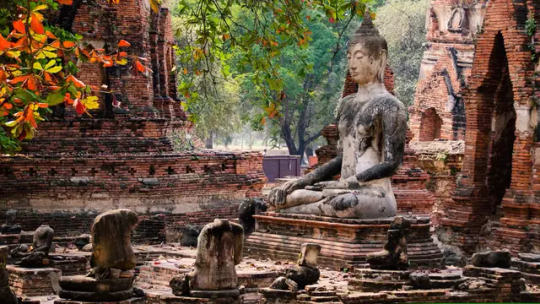
Thailand, one of the world's most popular travel destinations for backpackers, is renowned for its wonderful climate and exotic beaches. However, this nation has a lengthy history involving numerous kingdoms and political forces. This has allowed for the introduction of numerous traditions and civilizations. Visit some of the museums in Thailand that provide you with a rich and thorough history for the greatest method to learn about Thailand's past. There are many fascinating museums that are not just limited to history and will astound you.
Jim Thompson House Museum
Jim Thompson, an architect from the United States, spent approximately 25 years residing and working in Thailand. His fascinating life story begins when he served in World War II as a soldier and later made the Thai silk business well-known all over the world. The Jim Thompson house was a teak home that Jim personally designed and built, and he concentrated on decorating it with priceless Asian art silk pieces that he had gathered from all across Thailand. The house's traditional Thai architecture is on display year-round at this well-known museum in Thailand, where you can also learn more about Jim's life story and purchase some artwork.
National Museum
The enormous National Museum Bangkok, which is distributed across six separate structures and isn't typically classified as a single museum, houses a wide variety of ethnological collections of Thai art, antiquities, instruments, furniture, costumes, and other objects from previous Thai kings. This one of the interesting museums in Thailand is ideal for learning about the country's rich history, art, culture, and traditions in one location. The Buddha footprint from the Sukhothai period, the Buddha Jawan Chapel, and King Pinklao's bedroom furnishings are just a few of the unique and well-known displays. You can either go inside on your own or with a guide to learn more from them.
Siriraj Medical Museum
The Siriraj Medical Museum in Bangkok, which is horrifying yet fascinating, is appropriately referred to as the Death Museum in Thailand. It contains some of the most bizarre exhibitions, so it's not for the faint of heart. This exhibit is intense, featuring malformed and ill children's dead bodies preserved in formaldehyde alongside the skulls and skeletons of murder and rape victims. More exhibits cover the development of forensic medicine, graphic images of people dying in disasters, diseased organs, animal organs, and many more objects. Medical students from Thailand and other countries frequent the museum on a regular basis. Today, a large number of tourists visit this location to see this incredibly educational museum with Thailand tour packages.
Phuket Trickeye Museum
For your family's day out, the three-dimensional, mind-blowing, and weird trick-eye museum of Phuket promises a delightful diversion from Phuket's beaches. More than 100 painted and sculpted scenes put you in absurd circumstances. There are numerous galleries with works by Van Gogh and Da Vinci, such as a humorous recreation of the Mona Lisa, a zombie, or scenes from a movie where you are standing in front of a waterfall or strolling through the streets of a picturesque Italian town. At this Thai museum, visitors of all ages can be seen attempting to take the ideal, authentic photographs of the exhibits, which is funny not just for kids. There are also snacks and drinks accessible inside the museum.
Bangkok Art and Cultural Centre
The cutting-edge Bangkok Work and Culture Centre (BACC) presents work that represents Bangkok's developing contemporary scene. In addition to art and design, this museum of fine arts also features works by Thai and foreign artists in the fields of music, theater, photography, and film. The visitor has the ideal opportunity to savor Thailand tours contemporary art and culture in this enormous nine-story structure with its wide-ranging galleries and exquisite interior. The museum is very well curated, featuring everything from large sculptures to tiny installations. There are frequently held photography exhibitions and award ceremonies to help the artists get the recognition they deserve. Visitors can unwind in the art library and numerous modest cafes.
Thai-Burma Railway Centre Museum
Showcasing the illustrious history of the 145-kilometer Thai-Burma railway that was constructed during the Second World War. This railway, sometimes known as the "Death Railway," caused the deaths of between 75,000 and 100,000 Asian construction workers and approximately 12,000 Allied POWs. These were the individuals who were subjected to the brutal authority of the Imperial Japanese Army and suffered from ailments like starvation. This is one of the amazing places to visit in Thailand to explore during your tours to Thailand. It is the most instructive exposition to learn about how the Thai people were handled during the World War since it has numerous images and descriptions of railway buildings, prisoner living circumstances, and death casualties, among other topics.
4 notes
·
View notes
Text

Asian Civilizations Museum, Singapore
4 notes
·
View notes
Text
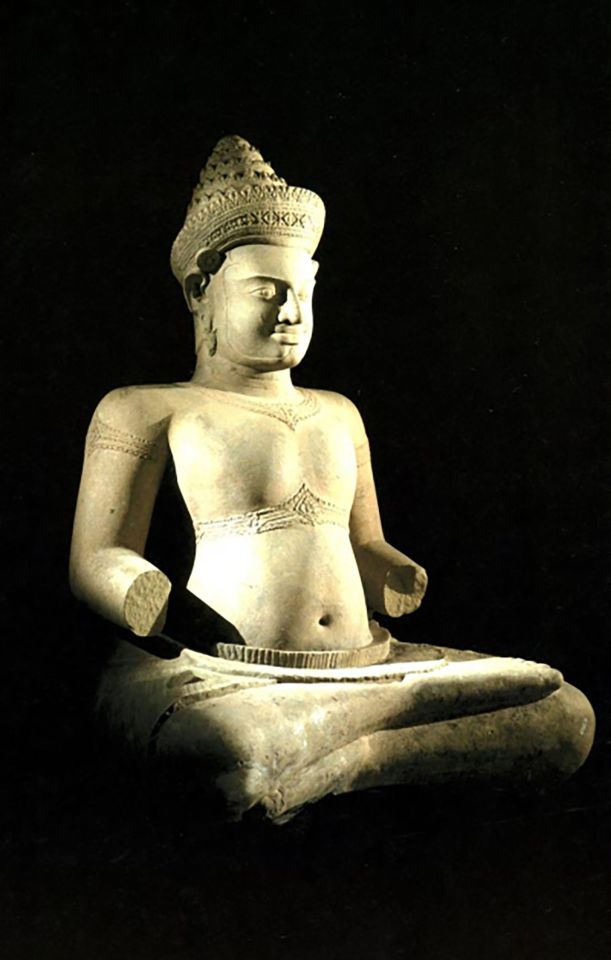

Family of Late US billionaire Agree to Return Looted Artifacts to Cambodia
The family of late American pipeline billionaire George Lindemann has agreed to return 33 looted artifacts to Cambodia, according to the US Attorney’s Office, a decision described as “momentous” by the Southeast Asian country.
The collection includes statues of deities, angels and demons from the 10th and 12th centuries from Koh Ker, the ancient capital of the Khmer kingdom, and from the famous Angkor Wat temple, the US Attorney’s Office for the Southern District of New York said on Tuesday.
In a statement it said the family’s decision to return the artifacts was voluntary. Lawyers for the Lindemann family did not immediately respond to a request for comment.
Cambodia’s archaeological sites suffered widespread looting during civil conflicts from the 1960s to 1990s and its government has spent years pursuing the return of antiquities, some of which it says are on display in American museums.



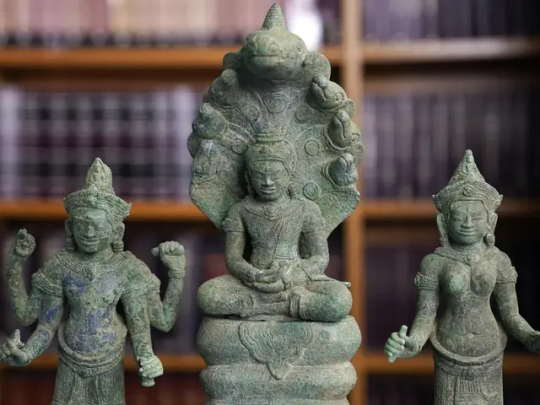
The United States repatriated 27 smuggled antiquities to Cambodia in 2021, including Hindu and Buddhist statues valued at about $3.8 million and last year returned 30 more including several that were more than 1,000 years old.
The artifacts that were held by the Lindemann family are expected to be repatriated later this year, said Bradley Gordon, a lawyer advising Cambodia on the repatriations and head of its investigation team.
He said he understood the Lindemann family had paid more than $20 million for the artifacts.
Cambodia’s Ministry of Culture and Fine Arts in a statement said the Lindemann family’s decision to return the artifacts set “an excellent and proper example for other museums and private collectors.”


In a June speech to the American Chamber of Commerce, two months before becoming Cambodia’s leader, Prime Minister Hun Manet said the antiquities were national treasures and more than just historical relics.
“They are the blood in our veins and the soul in our hearts that forge the identity of being Khmer… our heritages define who we are and who we will be,” he said.
US authorities have spent more than a decade working on locating artifacts from Cambodia and have so far repatriated 65. In 2019, art dealer Douglas Latchford was indicted for wire fraud and other crimes related to selling looted Cambodian artifacts, but the charges were dismissed after his death.


#Family of Late US billionaire Agree to Return Looted Artifacts to Cambodia#looted#stolen#theft#George Lindemann#Douglas Latchford#Angkor Wat temple#Koh Ker#ancient artifacts#archeology#archeolgst#history#history news#ancient history#ancient culture#ancient civilizations#ancient art
30 notes
·
View notes
Note
Once you become president and/or military dictator, what are your policy plans for cultural revival?
i have this dream of creating a federal agency whose acronym would be OPUS. idk what it stands for yet (i have a few ideas written down somewhere but i can't find them -- i need to organize my notes) but essentially it doubles as a jobs program AND a cultural affairs agency (and possibly a civil defense program but that's another story).
but this agency, inspired by fdr's works progress administration, would seek the train, educate, and employ the citizenry for a wide variety of jobs and this will include /cultural/ jobs too; writers, artists, musicians, poets, actors, museum curators, cultural scholars, historians, conservationists, etc.
and this agency, in collaboration with other agencies, would basically be in charge of overseeing all things culture (both its heritage and its continuing development): constructing, funding, organizing, maintaining libraries, museums, cultural festivals, civil-religious "shrines" and monuments, education curriculum, revolutionary/civil war reenactments, movies/books/tv shows/music/live performances (and censoring media in general), theme parks, incentivizing/mandating ornamentation and beautification of certain buildings and communities, huge political rallies and military parades, etc.
the list goes on but you get the idea. just to elaborate on a few of the things i mentioned above; cultural festivals. i want these to be way more common. i want festivals all the time. at the local, state, and federal level. i want them to celebrate local culture, state culture, national culture, ancestral culture, etc. people parading, live music, street performances, food, wearing traditional costumes, dancing, drinking, games, competitions (literary, musical, athletic, etc. hell, i think even having live debates as a form of cultural expression could be fun.), civil/religious leaders giving impassioned speeches, etc.
or the theme parks. ever since i was a kid i've always dreamed of having a disneyland-level theme park about america history and culture. i think it would honestly go so hard. i mean even disneyland has glimpses of what such a park could be like. just imagine it. a "colonial land" where you can see how the pilgrims and natives lived. a "pirate land" where they have naval warfare reenactments and rides like pirates of the caribbean. a "revolutionary war" land. "lewis and clark land." "yankee land" and "dixie land" and other lands to show off different regions' historical cultures. "civil war land." "america in the tropics land" to celebrate america's interventions in south america and asia and to celebrate asian american and latin american cultures. "wild west land." "westeward expansion/great plains land." "gold rush land" or "the gilded age" land. "roaring 20s" land. or a land similar to the aesthetics of "columbia" from bioshock: infinite. i have so many ideas for rides and attractions and themes. i just think it would be really exciting. you're wrong if you think otherwise.
5 notes
·
View notes
Text
Why Turkey Should Be Your Next Travel Destination

To get the best tourism services from here
Are you searching for a destination that seamlessly blends history, culture, and natural beauty? Look no further than Turkey. Nestled at the crossroads of Europe and Asia, this enchanting country offers an unparalleled experience for travelers seeking adventure, relaxation, or cultural immersion. From the bustling streets of Istanbul to the serene landscapes of Cappadocia, Turkey is a land where ancient traditions meet modern innovations. Whether you’re a history enthusiast, a nature lover, or simply someone looking to explore new horizons, Turkey has something extraordinary to offer. Let’s embark on a journey through this captivating country and discover why it should be your next travel destination.
Turkey: A Cultural Crossroads Between East and West
Turkey’s unique geographical position as a bridge between continents has shaped its identity as a melting pot of cultures. For millennia, it has been a hub for trade, art, and ideas, leaving behind a rich tapestry of influences from ancient civilizations like the Greeks, Romans, Byzantines, and Ottomans. This cultural fusion is evident in every corner of the country, making it a fascinating destination for travelers.
Key Highlights:
Strategic Location: The Bosphorus Strait, connecting the Black Sea to the Mediterranean, has made Turkey a vital crossroads for civilizations.
Cultural Diversity: From Ottoman palaces to Roman ruins, Turkey’s heritage reflects its role as a cultural bridge.
Modern Infrastructure: Advanced tourism facilities, including airports, luxury hotels, and transport networks, ensure a seamless travel experience.

To get the best tourism services from here
Istanbul: Where History Meets Modernity
No discussion about Turkey is complete without mentioning Istanbul, the country’s largest city and cultural heartbeat. Straddling Europe and Asia, Istanbul is a vibrant metropolis where the past and present coexist harmoniously.
Must-Visit Attractions:
Hagia Sophia: A architectural marvel that served as a church, mosque, and now a museum.
Blue Mosque: Famous for its intricate blue tiles and six towering minarets.
Topkapi Palace: A glimpse into the opulent lifestyle of Ottoman sultans.
Grand Bazaar: One of the world’s oldest covered markets, offering spices, textiles, and handicrafts.

To get the best tourism services from here
Ancient Wonders: Stepping Back in Time
Turkey is a treasure trove for history buffs, boasting some of the world’s most impressive archaeological sites.
Top Historical Sites:
Ephesus: Walk through the marble streets of this well-preserved Roman city, home to the Library of Celsus and Great Theatre.
Cappadocia: Explore surreal “fairy chimneys” and underground cities like Derinkuyu, carved by early Christians.
Troy: Discover the legendary city immortalized in Homer’s Iliad .

To get the best tourism services from here
Natural Beauty: Turkey’s Diverse Landscapes
From snow-capped mountains to sun-drenched beaches, Turkey’s natural beauty is as varied as it is breathtaking.
Iconic Natural Attractions:
Turquoise Coast: Pristine beaches, hidden coves, and crystal-clear waters in Antalya and Bodrum.
Pamukkale: Calcium-rich thermal pools cascading down white travertine terraces.
Lake Van: A serene high-altitude lake surrounded by rugged mountains.
Cappadocia’s Fairy Chimneys: Otherworldly rock formations best seen via hot air balloon at sunrise.
Adventure Opportunities:
Hiking in the Kaçkar Mountains.
Paragliding over Ölüdeniz.
Scuba diving in the Mediterranean.
Turkish Cuisine: A Feast for the Senses
Turkish food is a cornerstone of the country’s cultural identity, blending Central Asian, Middle Eastern, and Mediterranean flavors.
Must-Try Dishes:
Kebabs: From döner to şiş , savor tender meats seasoned with aromatic spices.
Baklava: A sweet pastry layered with pistachios and honey.
Lahmacun: Thin crust topped with minced meat and herbs, often called “Turkish pizza.”
Meze: Small plates of dips, salads, and seafood, perfect for sharing.

To get the best tourism services from here
Cultural Experiences Beyond the Ordinary
Turkey offers immersive cultural experiences that go beyond typical sightseeing:
Turkish Hammam: Relax in a traditional bathhouse for a rejuvenating scrub and massage.
Folk Music and Dance: Witness energetic performances of the saz (a stringed instrument) and halay dances.
Carpet Weaving: Visit workshops in villages like Göreme to learn about this ancient craft.
Modern Entertainment and Shopping
Turkey’s cities blend historic charm with contemporary amenities:
Istanbul’s Zorlu Center: A modern mall with luxury brands and gourmet dining.
Ankara’s Armada Mall: Ideal for fashion enthusiasts and foodies.
Nightlife: Trendy rooftop bars in Istanbul or beach clubs on the Turquoise Coast.
Practical Travel Information for American Visitors
Best Time to Visit: Spring (April–June) and autumn (September–November) for mild weather.
Visa Requirements: U.S. citizens can obtain an e-visa online or on arrival.
Transportation: Domestic flights, buses, and trains connect major cities efficiently.

To get the best tourism services from here
Conclusion: A Destination Like No Other
Turkey’s unique blend of history, culture, and natural beauty makes it a standout destination. Whether you’re exploring ancient ruins, floating above fairy chimneys, or savoring baklava by the sea, every moment in Turkey is a discovery. With its warm hospitality, diverse landscapes, and rich heritage, Turkey is more than a vacation — it’s a journey through time.
Pack your bags and experience the magic of Turkey!
0 notes